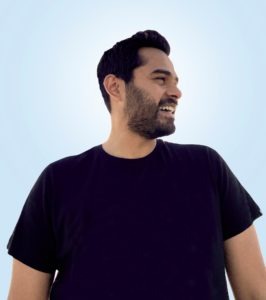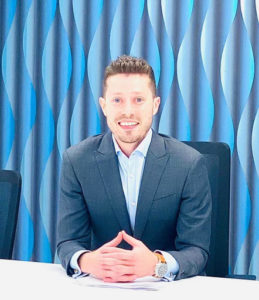Whole-person
Editor’s note: This month, Long-Term Living takes an in-depth look at the National Whole-Person Wellness Survey and wellness in general and how this culture change is impacting long-term care facility owners and administrators. Our coverage begins with Perry Edelman, PhD, director of outcomes research at Mather LifeWays Institute on Aging and Jan Montague, MGS, vice-president of community life at Lakeview Village, Lenexa, Kansas, explaining the significance of the first National Whole-Person Wellness Survey, undertaken last year. To see how the survey findings are working in the real world, we introduce you to holistic health at the Virginia Mennonite Retirement Community, Harrisonburg, Virginia; a forward-thinking facility that introduced whole-person wellness back in the late 1990s. We also present a discussion with Cornelia Hodgson, AIA, a well-known authority on wellness environments for seniors. We hope our coverage educates and inspires you to embrace whole-person wellness in your facility; and if you already have, to reaffirm its importance to your staff and residents.
As continuing care retirement communities (CCRCs) prepare to meet the needs of baby boomers who are beginning to move to senior living communities, whole-person wellness is becoming more than a slogan; it is becoming an expectation of a way of life. Today, many CCRCs are undergoing a major cultural change, shifting to a person-centered and person-directed approach that embraces a holistic way of thinking about wellness and quality of life.
To examine the current status and future expectations with respect to wellness programs in CCRCs, Mather LifeWays Institute on Aging, along with architectural firm Dorsky Hodgson Parrish Yue, and Ziegler Capital Markets, conducted the first National Whole-Person Wellness Survey. Distributed to executive directors and program managers of CCRCs across the United States, the survey focused on the six dimensions of whole-person wellness (physical, social, intellectual, emotional, spiritual, and vocational) and covered a wide range of topics, from wellness philosophy/goals and program features, to the physical design of spaces used for wellness activities. Respondents included communities (N = 61) that represent all geographic areas of the United States and a variety of settings, including rural and suburban, as well small and large urban locations. Descriptive analyses based on survey findings follow.
Impact of wellness programs
Overall, respondents were very positive about the impact of wellness programs. When asked to rate 25 items using a seven-point scale (one indicating no impact and seven indicating a great deal of impact), wellness programs were perceived as having widespread impact; the mean scores for each of 21 items was at or above four—the midpoint of the scale. Impact ratings were highest for a number of core issues, including residents’ ability to:
Exercise regularly at least three times per week and accomplish everyday activities (physical dimension)
Participate in activities that are meaningful to them, volunteer or engage in hobbies or occupational interests (vocational dimension)
Socialize with others (social dimension)
Continue learning or other opportunities for intellectual stimulation (intellectual dimension)
Find meaning and purpose in life (multiple dimensions)
Respondents demonstrated a strong belief that the wellness program had an impact on the satisfaction of both residents and family members. An overwhelming majority (88%) of respondents indicated a score of five or higher when asked about the impact on residents’ satisfaction, and almost three-fourths of respondents provided a score of five or higher when asked about the impact on family member satisfaction. In terms of initially attracting people to their CCRCs, almost three-fourths of respondents provided a score of five or higher when asked about the impact of the wellness program on residents’ and family members’ decision to join the community. In a related finding, although the impact of the wellness program on the CCRC’s image and visibility was in the four-point range, communities in which wellness activities were offered to staff members may have had a particular advantage. Respondents from those communities reported that the impact of their wellness programs on the organization’s image in the outside community and ability to obtain a greater market share was in the six-point range.
Factors related to successful programs
Respondents to the National Whole-Person Wellness Survey were asked to rate 16 factors in terms of how essential each was to the success of their wellness programs. Program variety and organizational commitment were the two highest-rated factors; on a seven-point scale, 75% and 70% of respondents, respectively, rated these factors as a six or seven; however, the fact that each of the 10 highest-rated factors received a mean score of five or greater suggests that success of wellness programs is dependent upon multiple factors. When asked to indicate the five most essential factors, organizational commitment was named most frequently (74%), followed by trained/experienced staff (61%), programs appropriate to resident abilities (56%), variety of programs/activities (56%), and financial resources (51%). These factors may provide guidance to managers attempting to develop or improve their programs.
Culture of wellness
Whole-person wellness is most effective when it becomes part of the common culture of the senior living community. This becomes possible when everyone in the community begins to view life from a positive, proactive approach to all aspects of their personal and communal lives. Whole-person wellness must be a planned partner in all actions and activities. At its best, a culture of wellness suggests a community where all stakeholders—residents, staff, managers, and board members—participate in whole-person wellness as both facilitators and recipients.
Achieving a comprehensive, community-wide culture of wellness can be thought of as a journey, with communities at different points down the path. Three profiles were identified that reflect communities’ location on the path to a culture of wellness: Tenderfeet (communities that have barely begun the journey), Travelers (communities that have traveled varying distances down the path), and Trailblazers (communities that are blazing the trail toward a culture of wellness). One extremely important finding is that there were no significant differences among these three groups of CCRCs in terms of a number of characteristics, including setting (large urban, small urban, suburban, rural), age of the community, number/types of buildings, etc. Thus, achieving Tenderfoot, Traveler or Trailblazer status was not related to any of these characteristics. Based on these analyses, almost any community has the potential to be a Trailblazer!
Future expectations
Respondents’ future expectations indicated a clear trend toward a whole-person approach to wellness. The foundation for a culture of wellness begins with the community’s philosophical approach. Although only one-third of the communities had written goal/objectives related to staff wellness, an additional 38% expected their communities to have written objectives for staff in the next 12 months. Similarly, about one-third of respondents indicated that they had a wellness team that included residents, but an additional 38% of the respondents expected their community to have a wellness team that included residents in the next year. Growth in opportunities for wellness also supports the shift to the whole-person wellness model. Although expansion in each of the six dimensions was expected within two years, the greatest growth is expected in the two areas with the fewest current opportunities—the emotional and vocational dimension. Thus, communities appear to be moving toward a more balanced offering across the six dimensions of wellness.
Design of the physical environment is another critical component of a common culture of optimal aging. The National Whole-Person Wellness Survey documented changes in communities’ physical space and design that demonstrated an increased emphasis on wellness. In the previous five years, more than half of the communities had renovated existing spaces for wellness-related purposes, while 62% of the respondents anticipated that there will be a need to add square footage and/or complete new construction related to wellness programming in the next five years.
Residential settings: Improving wellness outcomes
New tools have been developed to assess programs and improve the well-being of residents in independent living, assisted living, and skilled care settings. For example, the authors have developed a tool that assesses resident outcomes in terms of satisfaction, self-efficacy, stage of change, and goals related to the six whole-person wellness dimensions. This instrument is being used with residents in independent and assisted living environments. In addition, although whole-person wellness is not often a focus for people with dementia, Mather LifeWays Institute on Aging has developed a procedure that can improve dementia-specific care outcomes by assessing residents’ level of engagement and affect, as well as the dimension of wellness they are experiencing. This information can be used to identify activities that are most beneficial in terms of providing residents with positive experiences across the six dimensions of wellness.
Finally, Mather LifeWays Institute on Aging is currently working with CCRCs to identify the critical components of senior living communities (e.g., programming, staffing, and physical environment/design) that can be altered to maximize whole-person wellness benefits for residents, the staff, and the organization.
Jan Montague, MGS, is Vice-President of Community Life for Lakeview Village in Lenexa, Kansas. Ms. Montague serves on several national and international advisory boards and has authored numerous articles for professional journals focusing on whole-person wellness and optimal aging. Currently, Lakeview Village is involved in an applied research study that is examining the relationship between cognitive and functional ability. The collaboration partners include Art Kramer, PhD from the University of Illinois, Champaign-Urbana, Cognift, Ltd, Yoqneam Ilit, Israel, Interactive Health Partners, Salt Lake City, Utah, and Nustep, Inc., Ann Arbor, Michigan. Ms. Montague can be reached at (913) 744-2467 or jmontague@lakeviewvillage.org.
To send your comments to the authors and editors, please e-mail edelman0408@iadvanceseniorcare.com.
I Advance Senior Care is the industry-leading source for practical, in-depth, business-building, and resident care information for owners, executives, administrators, and directors of nursing at assisted living communities, skilled nursing facilities, post-acute facilities, and continuing care retirement communities. The I Advance Senior Care editorial team and industry experts provide market analysis, strategic direction, policy commentary, clinical best-practices, business management, and technology breakthroughs.
I Advance Senior Care is part of the Institute for the Advancement of Senior Care and published by Plain-English Health Care.
Related Articles
Topics: Activities , Articles











